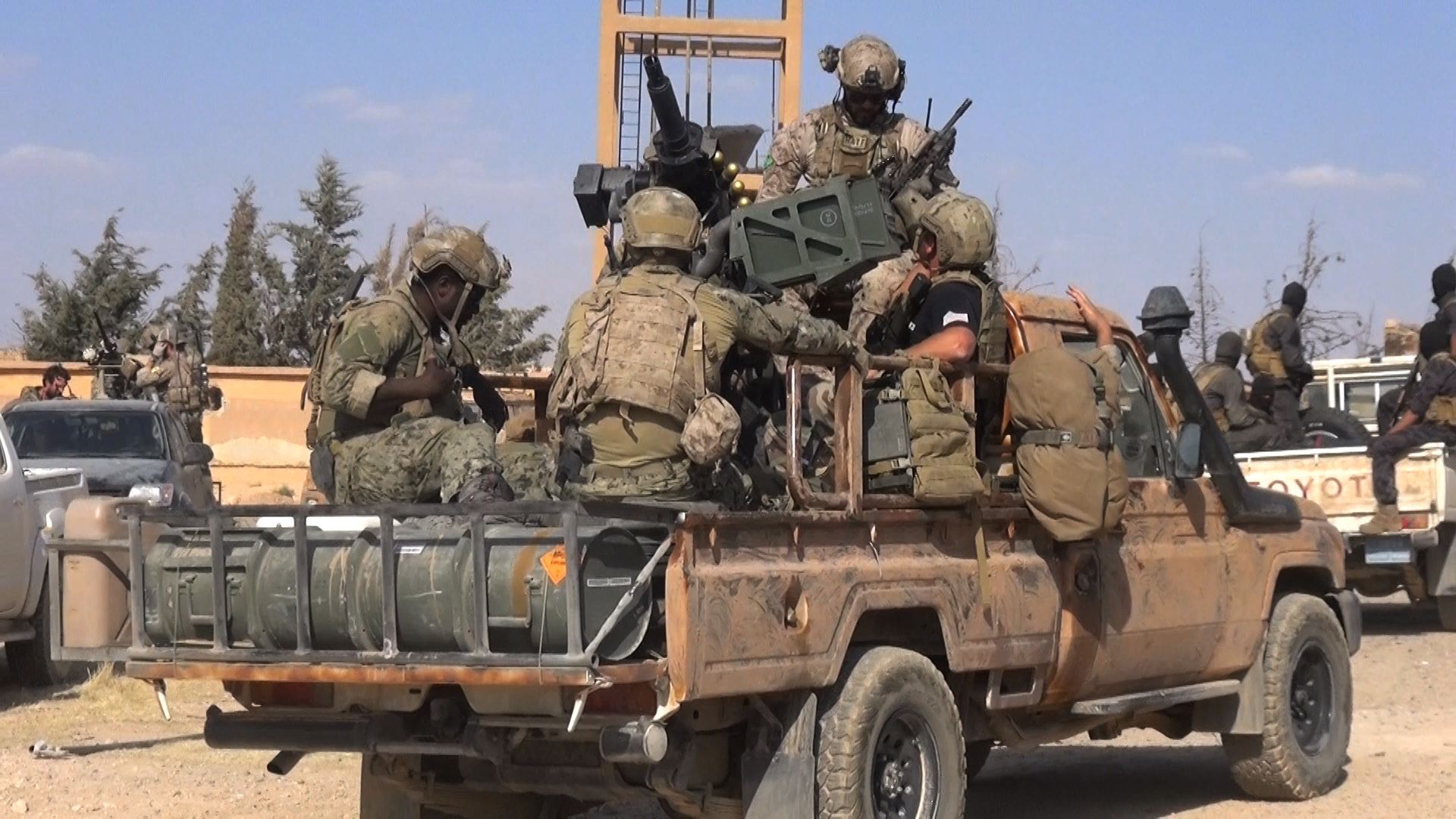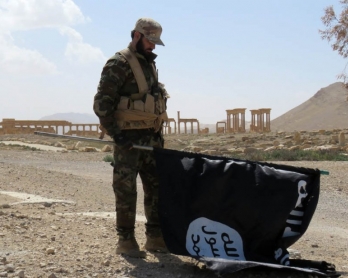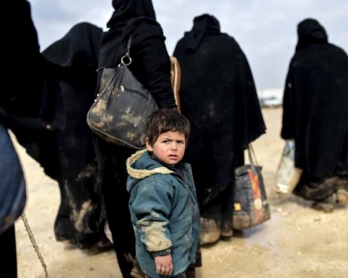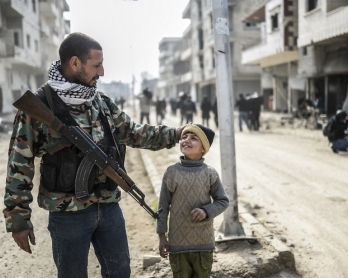A chance encounter on the Syrian front
Fatisah, Syria -- We were resting, hiding in the shade from the searing heat, when we saw the strangers arrive.
We were in the village of Fatisah, in northern Syria, which had just been captured from Islamic State by the SDF, the mainly Kurdish fighters battling the jihadists in this area. All the village residents have fled and the fighters, whom I’ve been following for several hours, were lounging in the shade of a house, resting up after a heavy battle.
Armed with machine guns and rocket-propelled grenades, the strangers pulled up in pick-up trucks. They stood out right away. Most didn’t look like they came from the region and they spoke English between them, with that distinctive Yankee drawl. A dead giveaway.
 (AFP / Delil Souleiman)
(AFP / Delil Souleiman)It wasn’t a secret that American “military advisers” were in northern Syria helping the SDF in the fight against the Islamic State. The US has said so itself, though it has insisted that they are working away from the frontlines. But it's rare for them to be photographed. And here I was, actually seeing them in the flesh and near the frontline.
 (AFP / Delil Souleiman)
(AFP / Delil Souleiman)I was with a videographer, Jihad Darwish, and we were both ecstatic. We have driven more than 600 kilometers to get here. Like everyone else, we knew that US soldiers were in the region. And now we were actually seeing them in action.
 (AFP / Delil Souleiman)
(AFP / Delil Souleiman)The village of Fatisah is about 50 kilometers north of Raqa, the de-facto Syrian capital of the Islamic State extremists. For several days now, the SDF has been waging an operation to chase the extremists from this part of the province. We are less than two kilometers from the area under the control of the jihadists.
The area is dangerous, dotted with mines and improvised explosive devices (IEDs). Most of the houses are booby-trapped, so there is no questions of going inside. In the skies above us, we see the planes of the US-led coalition, a reassuring sight under the circumstances. In any event, I am used to combat zones; I’ve worked in them often.
 (AFP / Delil Souleiman)
(AFP / Delil Souleiman)At first, I am careful not to photograph the American soldiers head on. I’m not sure how they’ll react. So I shoot them from a distance. Ever so slowly, step-by-step, I come closer. I am nervous, but I force myself to hide the anxiety and smile, trying to reassure them and put them at ease.
They don’t prevent me from taking pictures. They don’t seem to think that a photographer here is something bizarre. Some have a patch of them American flag on their sleeves. Others have the patch of a Kurdish People’s Protection Units (YPG). Still others of a women’s unit within the YPG. I wonder why, but don’t dare to go up and ask.
An SDF commander tells us that the men are US special forces and are there to provide training. Later, a Pentagon spokesman said that American commandos often wear insignia of the units that they train.
 (AFP / Delil Souleiman)
(AFP / Delil Souleiman)The soldiers, their eyes hidden behind sunglasses, don’t seem bothered by us at all. Some prefer to look away when they see us pointing our cameras at them. They don’t talk to us, but they are very calm and there is no hostility.
 (AFP / Delil Souleiman)
(AFP / Delil Souleiman)After a while, the US special forces and the SDF soldiers get into vehicles and head toward a school on the outskirts of the village, which apparently serves as their training camp. We follow them. On the way, we pass another group of US soldiers who are hauling an anti-tank system to the top of a building. “The Americans shoot surface to surface missiles from the top of this building on the explosives-rigged cars" that the IS often uses to attack the SDF forces, tells us Hawkar Kobane, an SDF commander.
One of the Americans, who seems to be in charge of the group, heads toward us, yelling in English for us to stop filming and shooting. We continue toward the school. But when we get there, SDF soldiers block our way. There is no question of getting inside. In any case, it’s getting dark, so we continue on our way having seen for the first time, US “military advisers” on the ground.
This blog was written with Rita Daou in Nicosia and Roland de Courson in Paris, and translated by Yana Dlugy in Paris.






